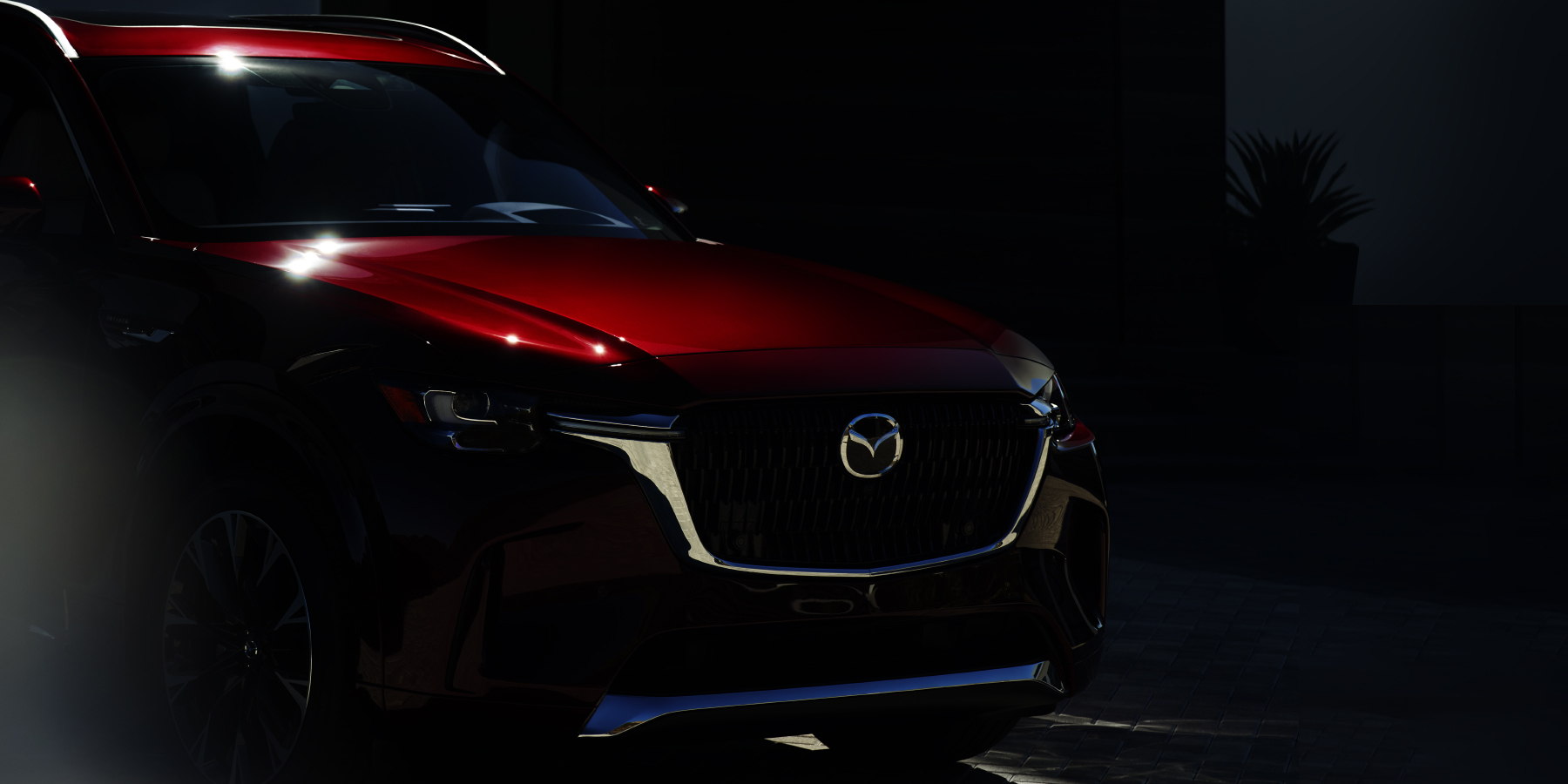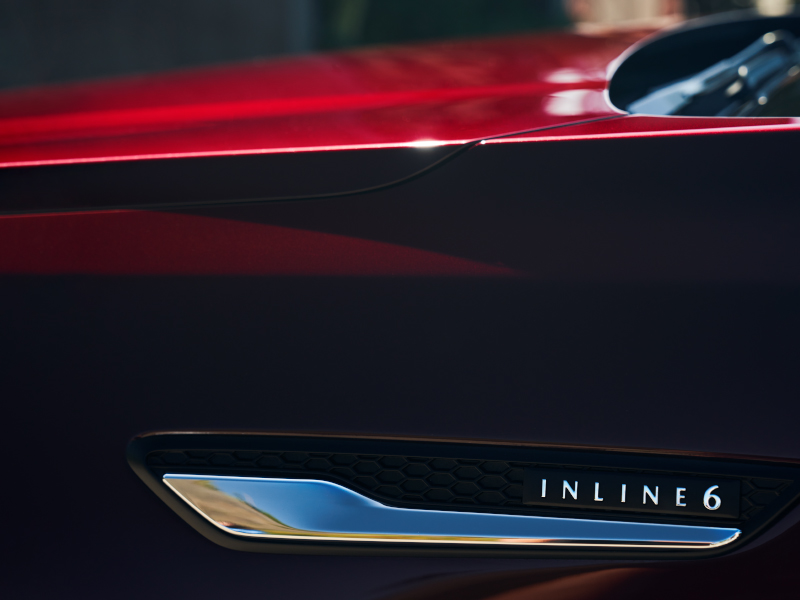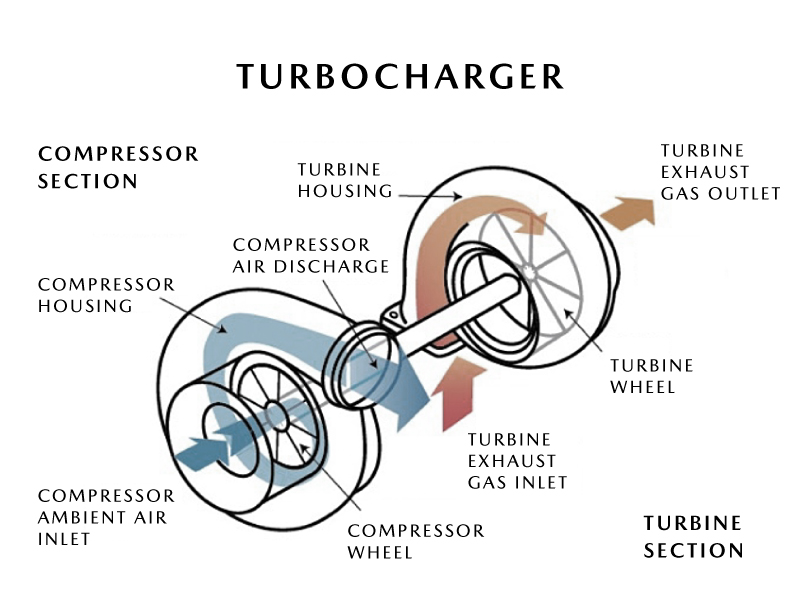Turbocharged Engines Explained
A turbocharged engine is an internal combustion engine (ICE) that uses a turbocharger to increase the efficiency and power output of the engine.

Whether you’re already planning to buy a vehicle with a turbocharged engine, wish to upgrade your car, or are simply exploring the term "turbocharged" in your car-buying research, here is what you need to know about the mechanics and benefits of turbocharged engines.

What is a turbocharged engine?
A turbocharged engine, also called a “turbo” engine, is an internal combustion engine fitted with a turbocharger — a device that compresses air into an engine as opposed to being sucked in under atmospheric vacuum — generating more power when needed. Turbocharged engines are typically more fuel efficient, enabling a smaller engine to do the work of a larger one. While historically found within race cars, turbocharged engines are now widely available among new vehicles today.
Since turbocharging an engine can enhance an engine's performance without adding displacement, it provides an increasingly common alternative to purchasing a vehicle with a larger engine. To this end, data from the U.S. Office of Energy Efficiency and Renewable Energy shows that in 2019, 34% of light-duty vehicles were turbocharged vs. less than 5% in 2009, just 10 years earlier.
What does a turbocharger do?
Speaking very generally, engines operate like pumps. A mixture of gas and air is compressed in the cylinder, and it’s ignited by a spark plug. That ignition starts the combustion process, wherein the pressure generated is converted to mechanical energy that powers the vehicle. Turbochargers (and superchargers) help feed more air into the engine, producing more power in an engine with a turbocharger than in an engine without one.

Specifically, turbochargers consist of two turbine wheels: one is driven by exhaust gasses, and the other turbine is connected to it. The engine exhaust spins the turbine, which in turn drives the intake compressor turbine (on many vehicles these rotate at up to 150,000 RPM or more), which draws in outside air. The rapid rotation of these turbines pressurizes the incoming air, pushing it into the engine — sometimes twice as much air as the engine would “inhale” on its own. The “charged” air-fuel mixture undergoes combustion, generating power to drive the vehicle.
Turbochargers can be fitted to engines with any number of cylinders. They are often used to “downsize” the engine for economy and emissions without giving up too much power output. An 8-cylinder engine, for example, may be replaced by a turbocharged 6-cylinder engine. Most V engines these days will have a turbocharger for each cylinder bank, and some inline engines sport multiple turbochargers, too.
What are the benefits of a turbo engine?
While more horsepower is always an enticing benefit on its own, most road car engines rarely run at maximum power (for context, just think about how often and how long you floor the pedal). With that in mind, here are the day-to-day benefits that a turbo engine can offer your vehicle:
● Improved efficiency: Since turbocharged engines use exhaust gas to force more air into the combustion chamber, they can achieve the same or even greater power output than a larger, naturally aspirated engine. They are often tuned to deliver peak torque at low RPM, (torque being what gets you going from a stop).
● Size and weight advantage: Because you can get more power from a smaller displacement, turbocharged engines tend to be smaller and lighter than naturally aspirated engines with similar power output.
● Tuning flexibility: Single turbo, twin-turbo, variable geometry turbo — these are just a few of the many different ways to build a turbocharged engine, giving more control over certain features, whether it’s less wear and tear, more power, or fuel efficiency.
● Enhanced performance: Turbocharged engines provide extra power, meaning more speed and quicker acceleration when you need or want it.
● Better sound: A turbo engine not only produces that classic revving when you press the gas, but turbochargers tend to muffle exhaust pulses so that your engine sounds smoother. On some turbos, especially high-performance units, you’ll hear the sound of pressurized air when you’re “on boost” (making power).
While it used to be said that turbocharged engines were not ideal for towing, these days many vehicles marketed as towing vehicles come with a turbocharged or supercharged engine. Just remember that if your turbocharged engine is being used like a bigger engine for towing, it’s using gas like one, too.
Turbocharged vs. supercharged engines
Turbochargers and superchargers are both components of forced air induction for greater specific power output. The main difference is how these two produce that extra power.
Turbochargers are driven by spent exhaust gasses from the combustion process. This can cause turbo lag or a momentary time delay between a driver pressing the accelerator pedal and the actual increase in propulsion, though this has been minimized with electronic controls.
Superchargers are driven directly by the engine utilizing a belt that spins the supercharger and compresses air into the engine. This allows superchargers to produce more power instantaneously. However, a supercharger is not as efficient as a turbocharger — it tends to be used for maximum performance instead of fuel economy. If you hear a car make a whoosh or a wheeze, it’s probably turbocharged; if it whines, it’s probably supercharged.
Mazda vehicles with turbocharged engines
With the exception of the CX-90 PHEV, CX-70 PHEV, and the MX-5 Miata, you can get a turbocharged engine on every new Mazda (optional or standard), including the Mazda3 Sedan and Hatchback (2.5L Turbo), the Mazda CX-5 (2.5L Turbo), Mazda CX-50 (2.5L Turbo), the Mazda CX-70 (3.3L Turbo Inline 6) and the Mazda CX-90 (3.3L Turbo Inline 6).
To explore your options, check out our build and price tool or visit your local Mazda Dealer for a test drive today.




















